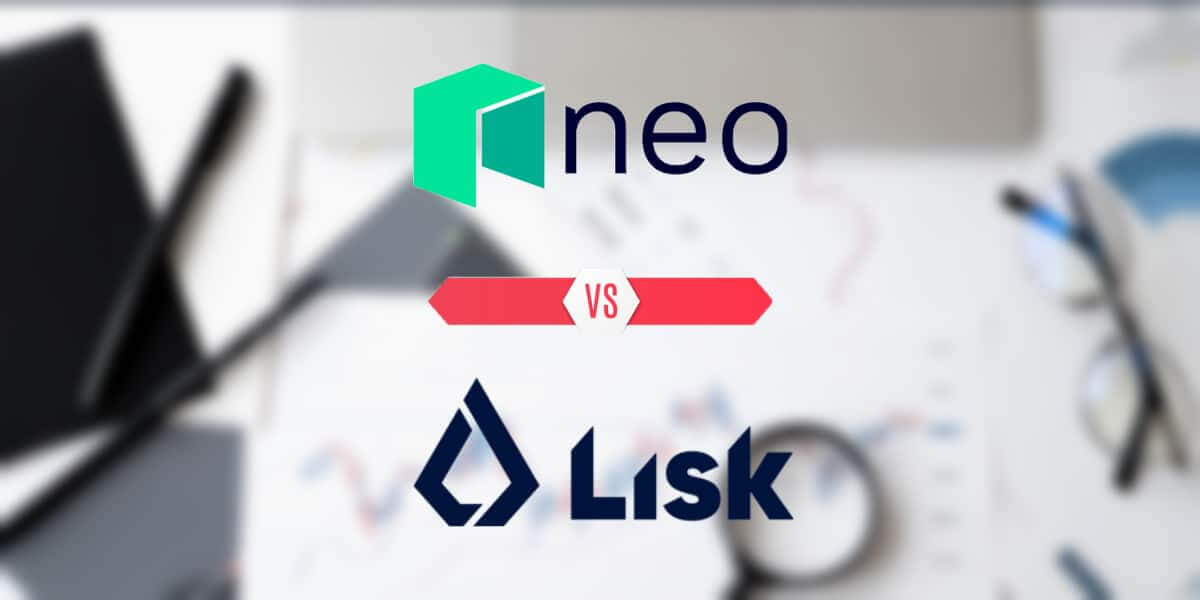
Lisk vs Neo – LSK and NEO side by side comparison
Comparing cryptocurrencies is crucial as it helps investors and traders make informed decisions by evaluating their differences regarding technology, market capitalization, use cases, and potential for growth. It enables them to identify the best investment opportunities and avoid scams, reducing the risk of financial loss. Let’s compare the two of them in this analytical article.
Lisk (LSK) and Neo (NEO) are both blockchain platforms that aim to make it easy for developers to create decentralized applications. Both platforms have similarities. However, they also have differences that can be important to consider when choosing which platform to use.
What is Lisk (LSK)?

Lisk is a blockchain-based platform and cryptocurrency that enables developers to build decentralized applications (dApps) using JavaScript, one of the most widely used programming languages. Max Kordek and Oliver Beddows established the platform in 2016.
Lisk uses a sidechain architecture. It allows developers to create their own custom blockchains that connect to the main Lisk blockchain. Therefore, developers can build their dApps in a more flexible and customizable way, without having limits of the main blockchain.
The Lisk platform is user-friendly and accessible to developers of all levels of experience. It provides a range of tools and resources, including software development kits (SDKs), a graphical user interface (GUI), and a marketplace for dApps.
LSK is the native cryptocurrency of the Lisk platform. It is used to pay for transaction fees, to incentivize block validators (known as “delegates”), and to access certain features of the platform. LSK can be bought and sold on cryptocurrency exchanges, and can also be used to participate in the Lisk ecosystem by voting for delegates or contributing to dApps.
Lisk also has a delegated proof-of-stake (DPoS) consensus algorithm, which allows token holders to vote for delegates who are responsible for validating transactions and creating new blocks on the Lisk blockchain. This can potentially provide a more efficient and democratic way of managing the network compared to other consensus algorithms.
What is Neo (NEO)?
Neo is a blockchain-based platform and cryptocurrency launched in 2014 as Antshares by Da Hongfei and Erik Zhang. In 2017, the project had a rebrand as Neo, which stands for “new, young, and open.”
Many often refer to Neo as the “Chinese Ethereum” because it offers similar functionality to the Ethereum network, including smart contract execution and the creation of decentralized applications (dApps). However, Neo has some unique features that distinguish it from Ethereum and other blockchain platforms.
Neo is a platform that offers wide-ranging support for different programming languages, such as C#, Java, and Python. This allows developers of all backgrounds to easily employ the platform regardless of their familiarity with Ethereum’s Solidity programming language. Neo stands out due to its dBFT consensus mechanism, which is more efficient and can handle a greater capacity than the proof-of-work consensus models typically employed by Bitcoin and Ethereum.
NEO is the native currency of the Neo platform. It is used to pay for transactions and to deploy and execute smart contracts and dApps on the Neo network. In addition to NEO, the platform also has a second token called GAS. It’s a utility token for transaction fees and to incentivize network participants to support the platform.

Lisk vs NEO comparison:
Architecture:
- Lisk is built on a unique architecture called “sidechains”. This allows for the creation of individual sidechains, each with their own unique features, which can link to the main Lisk blockchain.
- NEO, on the other hand, is built on a modified version of the Ethereum Virtual Machine (EVM) and uses a delegated Byzantine Fault Tolerance (dBFT) consensus mechanism.
Language support:
- Lisk uses JavaScript for smart contract development, which is a language familiar to many developers.
- NEO supports several programming languages. Those include C#, Java, and Python, which can make it more accessible to a wider range of developers.
Transaction Speed:
- Lisk has a relatively fast transaction processing speed, with a maximum throughput of up to 100 transactions per second.
- NEO has a higher transaction speed, with a maximum throughput of up to 1,000 transactions per second.
Consensus mechanism:
- Lisk uses a Delegated Proof of Stake (DPoS) consensus mechanism. Token holders vote to elect delegates who are responsible for validating transactions and creating new blocks on the blockchain.
- NEO uses a Delegated Byzantine Fault Tolerance (dBFT) consensus mechanism. It combines the benefits of Byzantine Fault Tolerance (BFT) and Delegated Proof of Stake (DPoS) to achieve high network throughput and transaction finality.
Token economics:
- Lisk’s token economics reward token holders who participate in the network by staking their LSK tokens.
- NEO’s token economics reward both token holders and users who participate in the network by staking their NEO tokens and generating GAS, which can be used to pay for transactions on the network.
Adoption:
- Lisk has a smaller user base and community compared to NEO, but it has a strong presence in Europe.
- NEO has a larger user base and community, especially in Asia.
Exchange Rate:
- Currently 1 LSK equals around 0.68 NEO, on in inverse 1 NEO is arround 1.47 LSK.
Lisk vs Neo – Final Verdict
In summary, Lisk and NEO are both promising blockchain platforms with different strengths and weaknesses. The architecture of Lisk, based on sidechains and JavaScript, may be inviting for some developers. On the other hand, NEO’s capacity to work with various programming languages and its faster transaction speed might be more attractive to others. Ultimately, the choice between the two platforms will depend on the specific needs and preferences of each project and developer.




